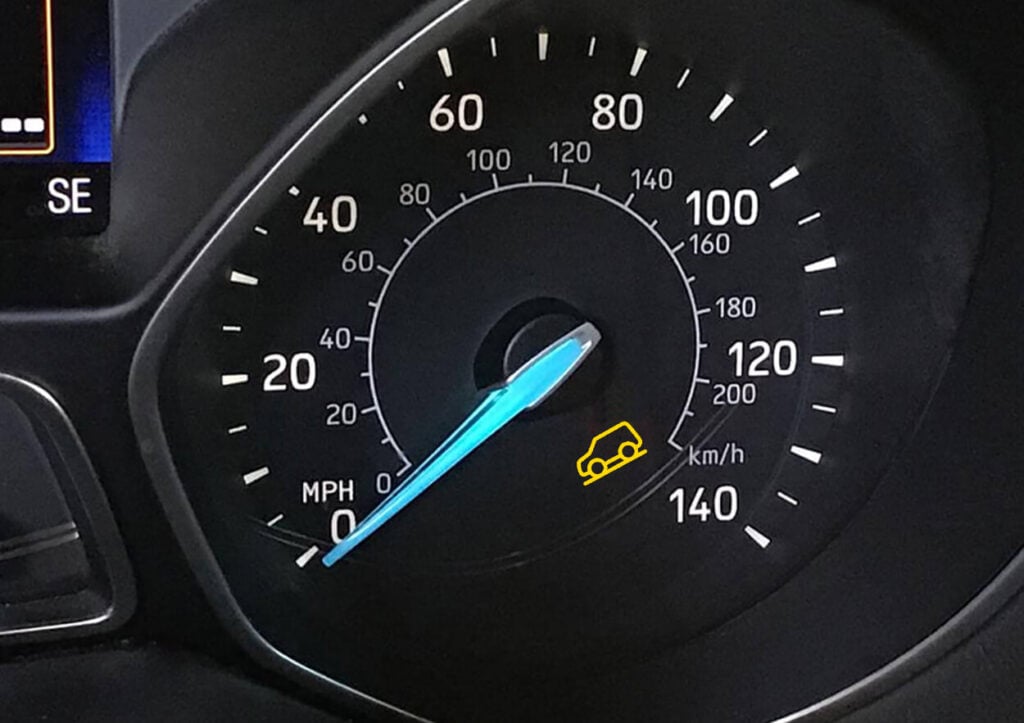Downhill Travels Made Easier – A Primer on Hill Descent Control
Imagine a specialized chauffeur in your car who only comes to life when you’re going downhill. This, my friends, is what Hill Descent Control (HDC) essentially does. A modern marvel, HDC automatically applies your vehicle’s brakes when descending, making your drive smoother and safer.
Lighting Up: Decoding the Hill Descent Control Warning Light
The sight of any warning light is enough to induce a mini heart attack for many drivers, and the Hill Descent Control light is no exception:
• Understanding the Light: First and foremost, it’s crucial to recognize what the HDC light looks like. Typically, it’s an icon of a vehicle descending a slope. When it illuminates, your car is signaling that something’s up with your Hill Descent Control system.
• Minor vs Major Issues: The light could come on for a variety of reasons. It may be as simple as the system being temporarily disengaged or turned off, which is usually not a cause for panic. However, if the light stays on or flashes, it could signify a more severe issue, such as a malfunctioning sensor or even a system failure.
• Don’t Ignore, Explore: Ignoring this light is risky business. If you are planning to drive on challenging terrains, you’d want to know that your HDC is fully operational. So, when this light comes on, it’s a sign that you should consult your vehicle’s manual or seek professional help immediately.
• Read the Manual: Every car is different. If the HDC light comes on, your first move should be to check the vehicle’s manual for specific guidance. Manuals often offer step-by-step troubleshooting tips tailored to your vehicle’s make and model.
• Professional Assessment: If the light remains on and you’ve tried basic troubleshooting, it’s advisable to get a professional diagnosis. Better safe than sorry, especially when negotiating steep terrains where a functional HDC system is essential for your safety.
Sometimes the issue is minor, but ignoring it could lead to less-than-ideal situations, especially when tackling steep slopes.

Driving Dynamics: Hill Descent Control vs Hill Assist, and Usage in Different Terrains
When navigating hilly terrain, two features often come into the spotlight—Hill Descent Control (HDC) and Hill Assist. Think of them as the dynamic duo of hill navigation, but each with their own superhero power. Hill Descent Control is your trustworthy guide when descending; it maintains a set speed, allowing you to focus on steering, sort of like an autopilot for downhill slopes. It governs your vehicle in a way that ensures your descent is as smooth as a toboggan ride down a snow-covered hill.
Hill Assist, however, is designed to tackle the uphill struggle, literally. It acts like a quick pause on a steep hill, giving you enough time to switch from brake to gas without rolling back—an invaluable asset when you’re starting from a standstill on an incline. This is the system you’d thank when your car doesn’t roll back into the vehicle behind you. As for different terrains, HDC shines particularly bright when you’re navigating through mud, snow, or even rocky paths. It’s like having a built-in mountain guide for your vehicle, allowing you to tackle challenging landscapes with the ease and confidence of a seasoned hiker. So whether you’re in a GMC Terrain or any vehicle equipped with these features, understanding the distinction and proper use of HDC and Hill Assist can significantly improve your driving experience.
To Use or Not to Use: How Hill Descent Control Impacts Your Brakes
The common chatter among vehicle owners often revolves around the impact of Hill Descent Control (HDC) on brake longevity. One might think that frequently using HDC would be equivalent to signing a death warrant for your car’s brakes. This belief, while widespread, is often more fiction than fact. HDC functions like a well-managed soccer team—every player, or in this case, each wheel, has a role to play, and no single player is overly burdened.
The HDC system smartly distributes the braking force across all four wheels, thereby minimizing the wear and tear on any single brake component. This built-in efficiency is like setting your heating system to distribute air evenly throughout your home, rather than blasting it all in the living room. While HDC does employ your brakes, it does so in a manner that is generally less harmful than if you were pumping the brakes yourself all the way down a steep hill. So go ahead and enjoy that downhill journey with some peace of mind, but as always, don’t forget about your vehicle’s regular maintenance schedule.
Turning It Off: Steps to Deactivate Your Hill Descent Control System
• Consult Your Manual: The first step in turning off your Hill Descent Control (HDC) is to consult your vehicle’s manual. It’s like the Rosetta Stone of your car, unlocking the mysteries of all those dashboard buttons.
• Identify the HDC Button: Usually, there’s a dedicated HDC button on your dashboard or center console. It often features an icon of a car going downhill.
• Press and Hold: Simply pressing the button momentarily might not do the trick. Sometimes you need to hold it down for a couple of seconds to turn the system off.
• Onboard Computer Navigation: In more advanced vehicles, turning off HDC might involve delving into your onboard computer settings, usually accessible via the dashboard screen.
• Indicator Light: Make sure the HDC light on the dashboard turns off to confirm the system is deactivated. If it doesn’t, there might be a malfunction requiring professional attention.
• Don’t Ignore Persistent Issues: A warning light that won’t go off can indicate a more significant issue. It’s like having a persistent cough; you need a doctor to check it out, not just cough syrup.
Price of Peace of Mind: Potential Repairs and Associated Costs
Ah, the unavoidable reality of automobile ownership: repairs and maintenance. When the Hill Descent Control system malfunctions, you’re likely to see that warning light blaze up on your dashboard like a bonfire. And yes, at that moment, one can’t help but wonder, “How much is this going to cost me?” The truth is, it can vary. Repair costs are similar to buying a plane ticket; prices fluctuate based on a multitude of factors.
The costs can range from a mild bite of a few hundred Canadian dollars to a more painful sting exceeding a thousand. The variability lies in the nature of the repair. If it’s a sensor issue, you might be looking at the lower end of the spectrum. However, if it’s a complex control module malfunction, then brace yourself for a bill that’s on the higher side. The key takeaway? Timely attention can save you money and potential headaches down the line. Much like regular dental check-ups prevent more severe issues, so too can early HDC diagnostics prevent more costly future repairs.

Expert Tips: Using Hill Descent Control Safely and Effectively
• Know Your Speed Limit: HDC typically operates between speeds of 8 km/h and 32 km/h. Ignorance isn’t bliss here; it’s essential to know your vehicle’s HDC speed limitations.
• Read Manufacturer Guidelines: These aren’t just booklets to store in your glove compartment; they contain critical information for the effective use of HDC.
• Test in Controlled Environments: Before relying on HDC on a steep, rocky hill, try it out in a less risky setting to get a feel for how it works.
• Don’t Over-rely on HDC: Think of it as an extra set of hands, not a replacement for attentive driving. Always keep your eyes on the road and hands on the wheel.
• Understand Terrain Types: HDC’s effectiveness can vary based on the type of terrain. Knowing how it performs on gravel versus snow can be a lifesaver.
• Consider Professional Instruction: If you’re going to use HDC frequently, especially in challenging terrains, a quick lesson from a pro can elevate your downhill driving game substantially.
Remember, knowing how to navigate the intricacies of your Hill Descent Control system not only improves your driving experience but also enhances your safety.
Steer Clear of Descending into Chaos – The Final Word on Hill Descent Control
Understanding Hill Descent Control is not just for the tech-savvy or the mountain dwellers. It’s for anyone who wants a safer, smoother drive. If you find your HDC warning light comes on and you’re not sure what to do, remember that mobile mechanic services like Uchanics are available in Canada to help diagnose and fix the issue right in your driveway. Don’t gamble with your safety; get professional help when needed.
There you have it! Your descent into the world of Hill Descent Control doesn’t have to be steep or perilous. Navigate it with ease, just as you would a downhill road with the help of HDC.
